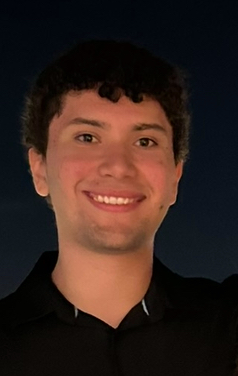Social Impact Internships: Jesus Caraballo Anaya (’28)

My name is Jesus Caraballo Anaya and I am a rising sophomore at MIT studying Computer Science and Engineering (6-3). I come from Orlando, FL and enjoy poker, soccer, and whitewater rafting. For the past summer, I’ve been interning at River City Community Development Center, an afterschool safe haven for kids to learn valuable skills like tuckpointing and electricity and get paid, as a Technology Innovation Intern.
Through my time before and at MIT, I’ve always believed that my success can be measured by tangible, quantifiable skills.The complexity of the math concepts I grasped, how many people star and use my coding projects, and the speed at which I solve algorithmic questions dictated the value I provided and the quality of my work. At the beginning of my journey as a “Technology Innovation” Intern for River City Community Development Center, I took comfort in thinking my contributions would be purely technical, as that is precisely what I was good at.
During my first meeting with my mentor and supervisor, Michelle, we discussed logistics, onboarding steps, training, initial tasks, and the idea of data as a means for storytelling. She emphasized that data is intrinsically tied to stories. Every field trip attendance, Harambee professional training, and summer camp rating contributes to the story of how R CITY is helping realize a brighter future for the community of Humboldt Park. During that meeting, she instilled in me the importance of using data responsibly, as it contains the history of what’s been happening and the power to change it for the better.
During my first week, I was tasked with analyzing survey results from recent programming and making a presentation. Reading the passionate, grateful, and sometimes silly responses from kids elucidated the impact that R CITY has on its community. My trip to Chicago for training further bolstered that impression as I got to see firsthand just how much every member of the staff cares. I distinctly remember Sean, one of the programming leads, mentioning that his goal for the year was to get teens to see R CITY as a “cool” place to hang out and stay off the streets. The way he talked about gang involvement and the path it sends you on reverberated with me through the whole summer; the problem was clear.
At Chicago, I was also able to attend R CITY’s Juneteenth event and spent some time meeting the community. I was able to chat with parents, play basketball with the Harambee team, and even taught the younger kids how to play soccer. The data suddenly came alive; beyond the numerical values, the data R CITY collects catches a
glimpse of their relationship with the community and the positive impact they are having in correcting patterns of systematic violence. I was inspired to do more, and a meeting with a family from the R CITY church, the Leismans, provided the direction: a data migration project.
In Salesforce, the package for non-profits drastically changed in 2017, when NPSP and PMM were introduced. The objects and workflows from before were completely incompatible with this new format, so the team had to find workarounds and divvy up data chronologically. The issue is that the story of one of R CITY’s core missions, guiding children from cradle to career, was being disrupted as reports and analytics could not be run on every child’s entire journey because of this data incompatibility.
For the remainder of my internship, most of my time was focused on writing python and bash scripts that interact with the Salesforce CLI and SDK to migrate the old data into the new format while ensuring accuracy. Initially, I struggled to learn Salesforce’s software kit because it was so different from the languages I am used to and dealt with concepts I haven’t come across yet. Then I struggled with pulling data from the nested service objects, then reconciling CSV line endings between Windows and Linux, and finally with failed bulk uploads for various reasons. Though it became frustrating, talking through my process with Michelle and doing other tasks in between helped, and at the end I was able to finish the project and roll it over to production.
My final deliverable was an object compatible with the new data format that could be used for running reports, data analytics, and help with grant writing. R CITY can now see the full picture of all the families and children they’ve guided from preschool to university and can use their data to convince more of their mission and continue changing Humboldt Park for the better. More than the utility aspect, I’ve come to see my work through a humanistic lens; my contribution is in the increased ability for R CITY to continue shaping children’ s lives in a better direction, not the lines of code I wrote.
Tags: Social Impact Internships, Social Impact Internships 2025, Social Impact Internships Summer 2025, Tech for Good
